Product designers Yael Mer and Shay Alkalay launched their studio Raw Edges in 2007. After having studied together at London’s Royal College of Art and working collaboratively on a design project in China, Yael and Shay knew it was about time to start their own thing. The Israeli couple have a very unique approach to design; utilitarian but at the same time playful and outstandingly creative. When you look at the duo’s exceptional furniture, you can tell how much imagination and ingenious talent emerges from the fusion of Yael and Shay’s minds.
Raw Edges is part of OKAY Studio, a collective of nine designers within the field of furniture, products and objects, who have set their studios up in a huge run-down warehouse space in Stoke Newington. The collective of individual designers share more than just a space; every designer has their own separate studio but a communal area with a table football unites them.
We visited Shay and the heavily pregnant Yael earlier this year to get an insight into their work and philosophy. With design collaborations for Cappellini, Established & Sons and Stella McCartney, as well as exhibitions in various galleries and museums under their belt, Raw Edges are evolving into an established brand and attracting devotees all over the world.
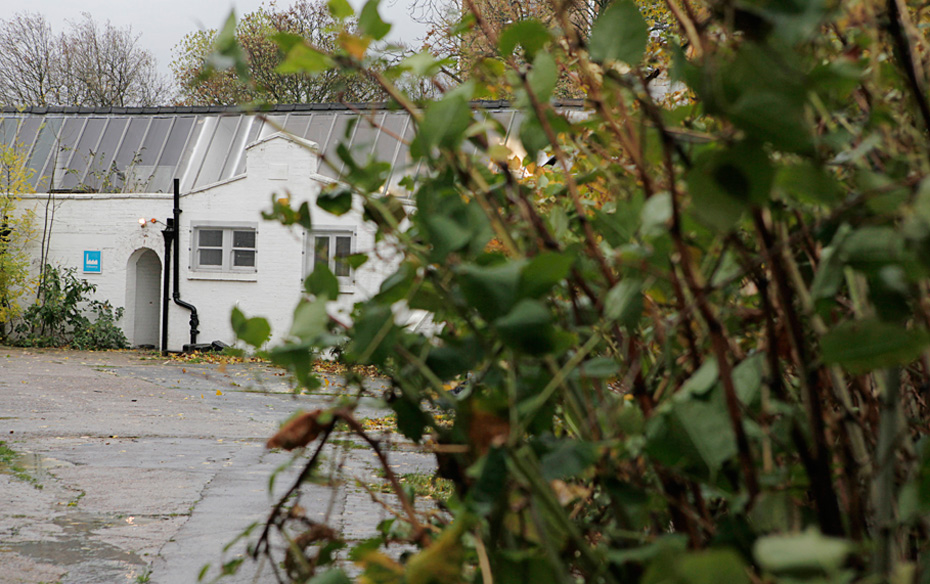
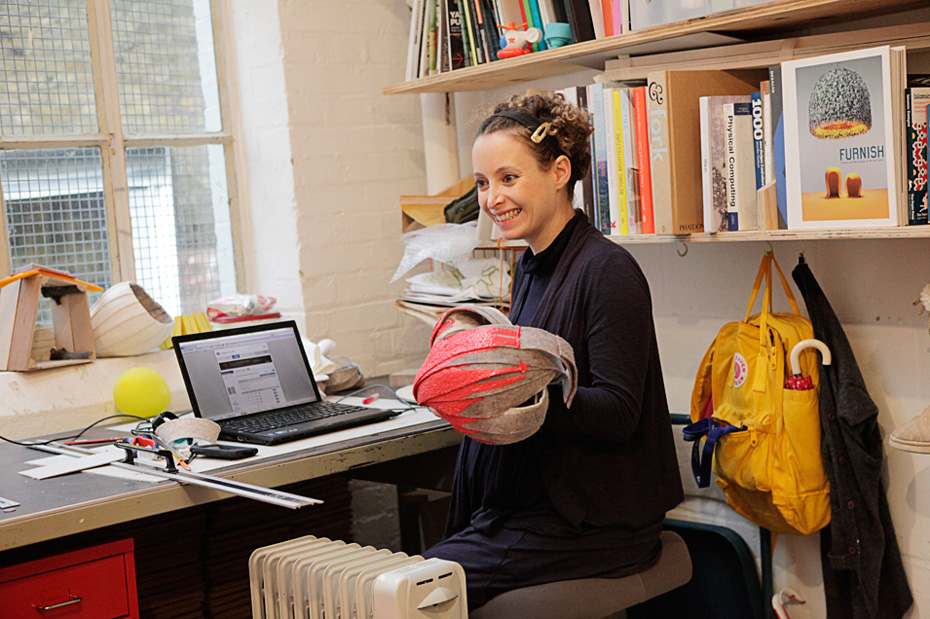
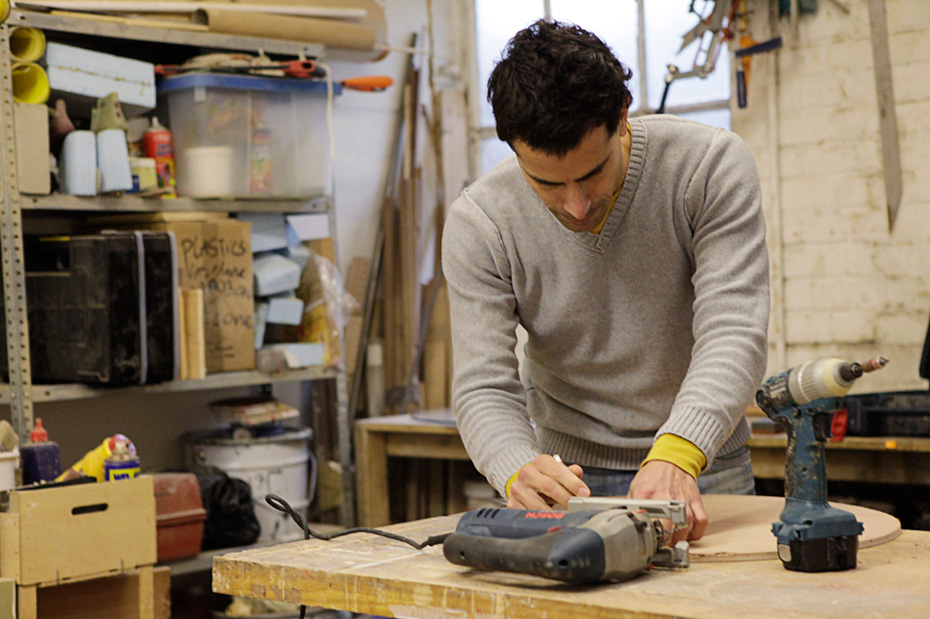
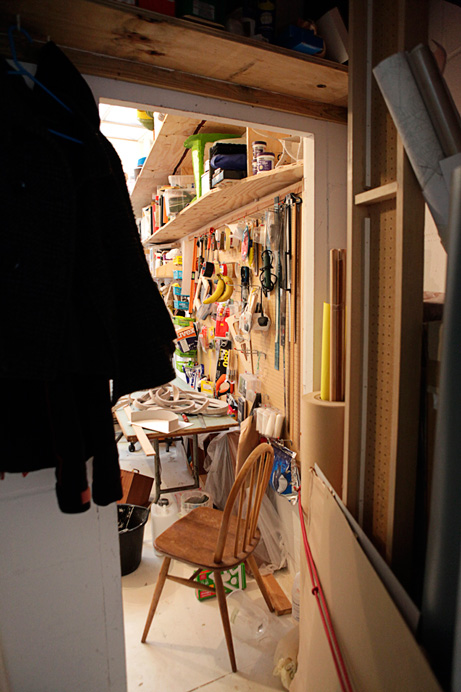
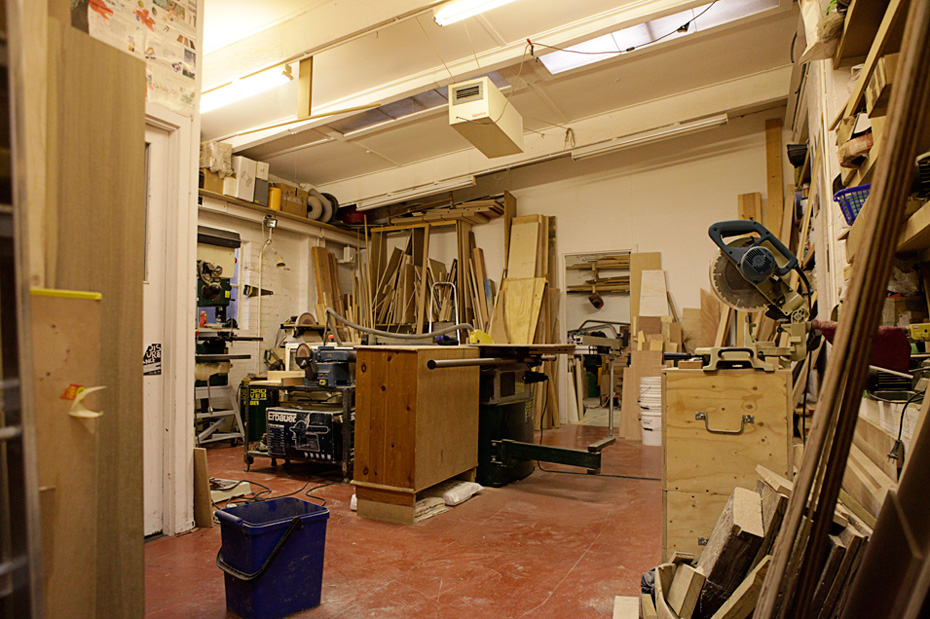
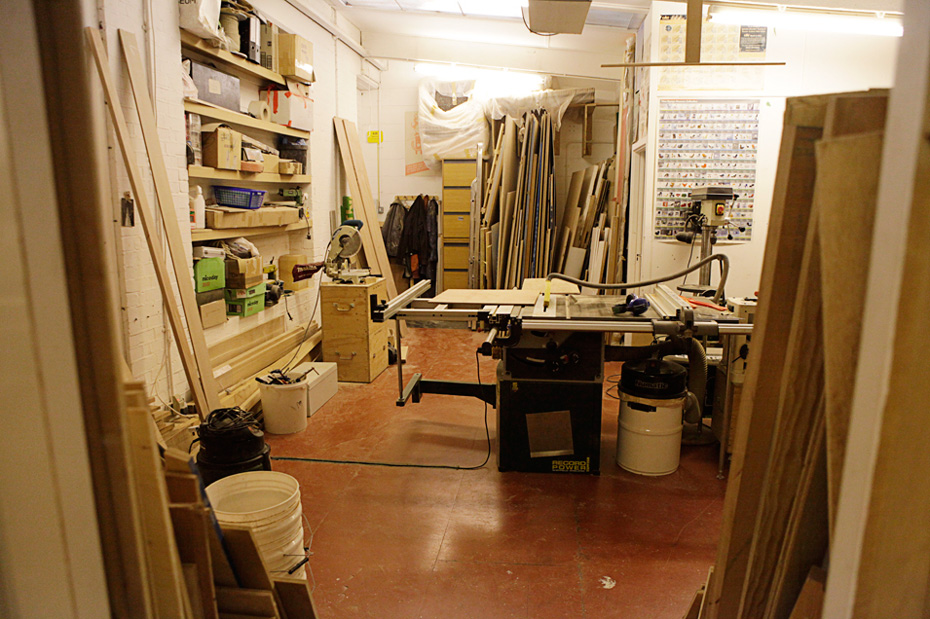
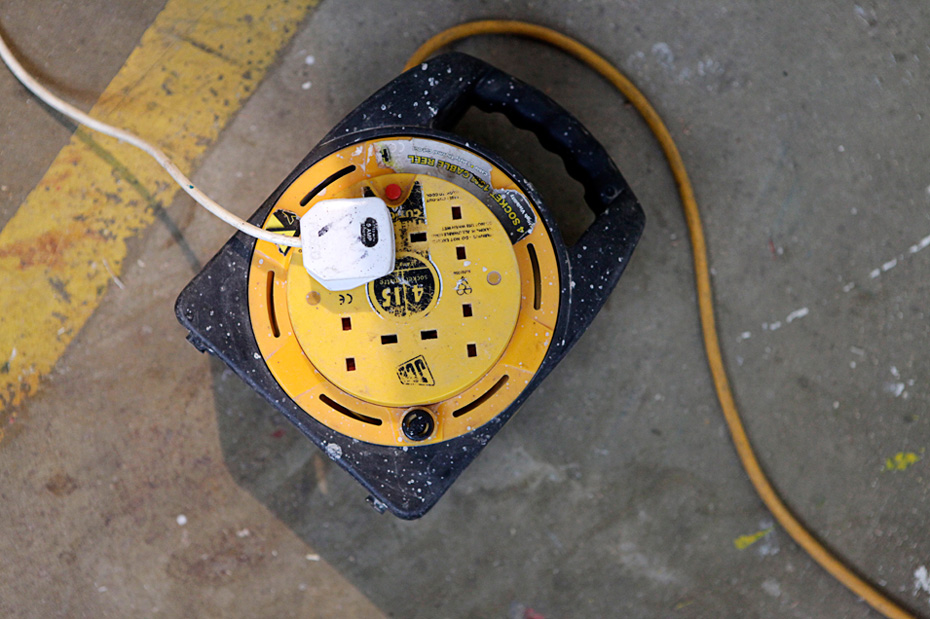
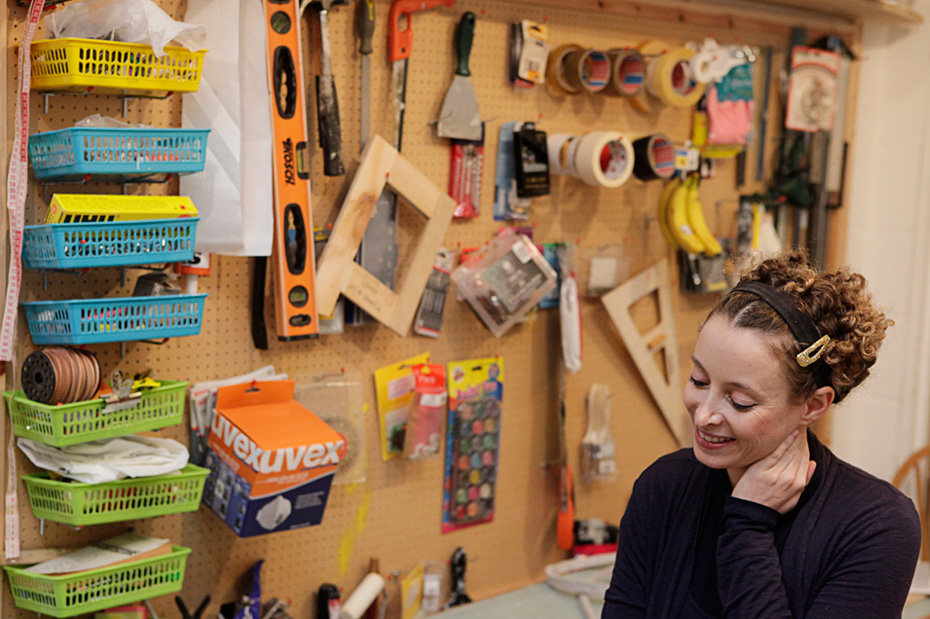
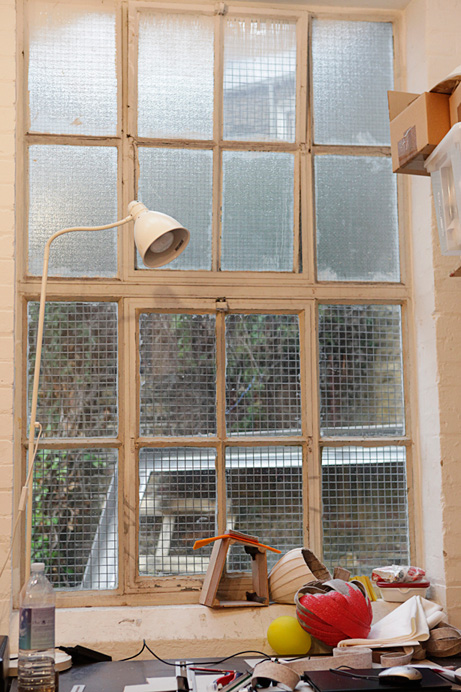
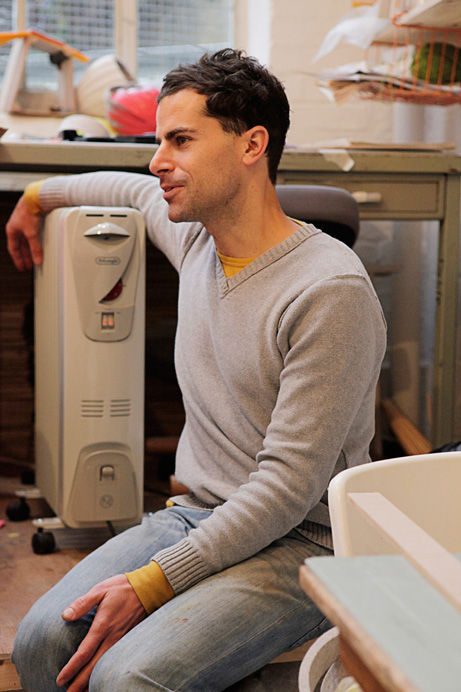
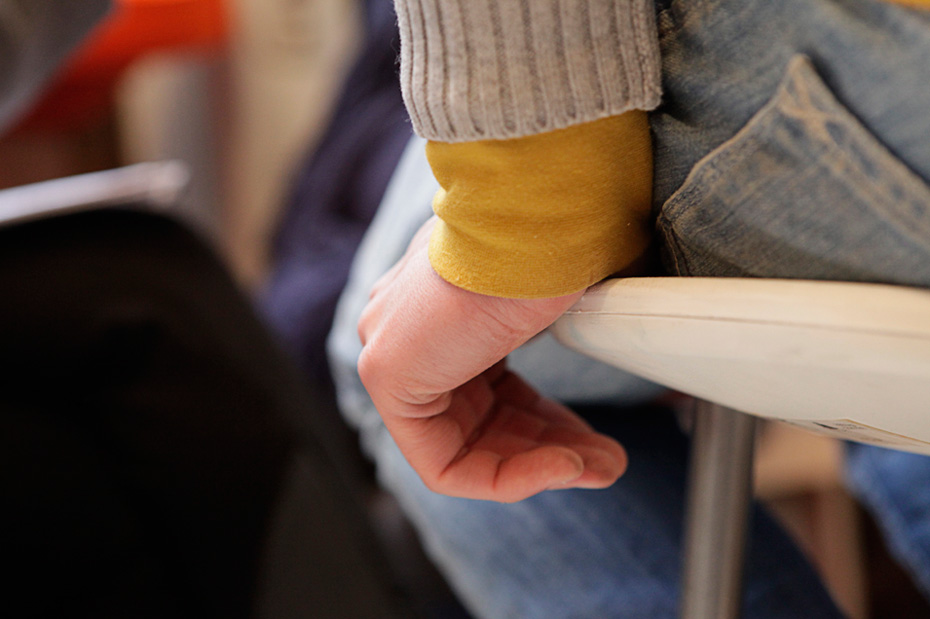
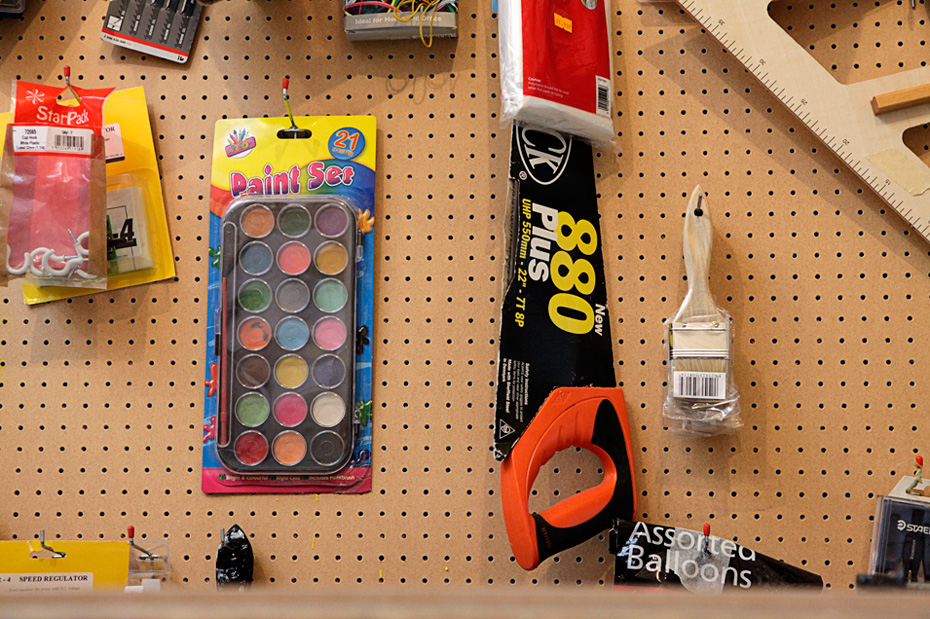
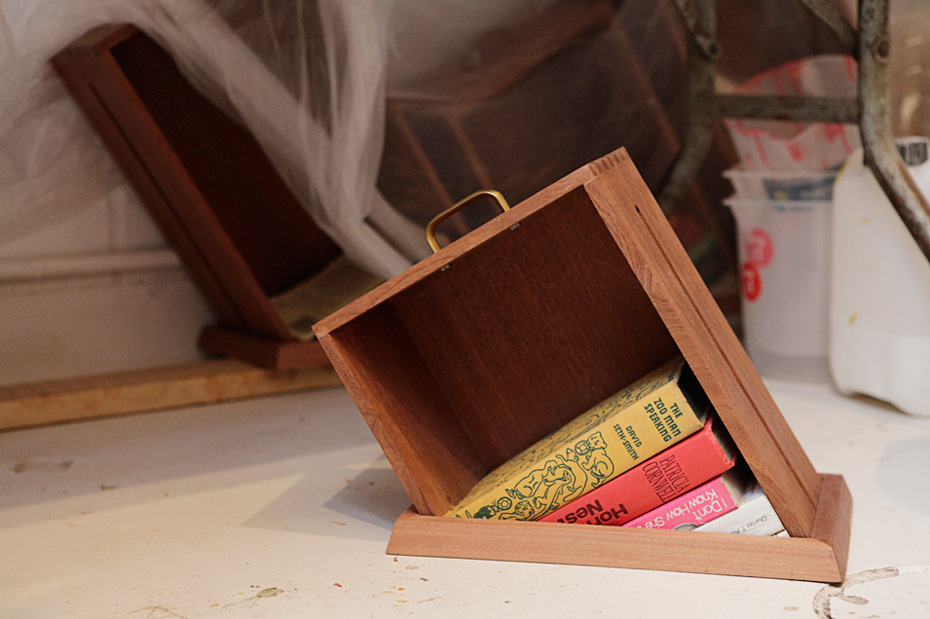
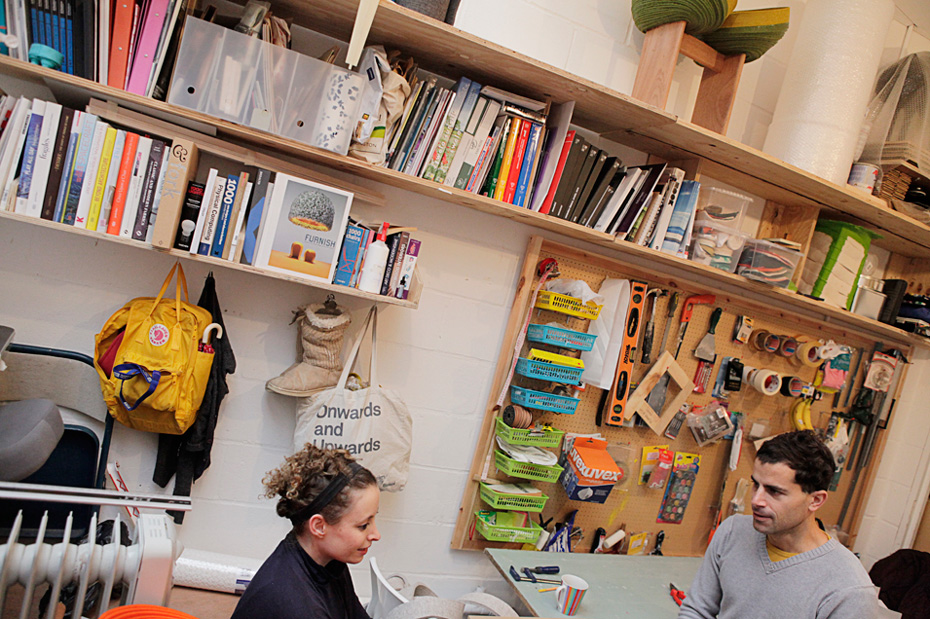
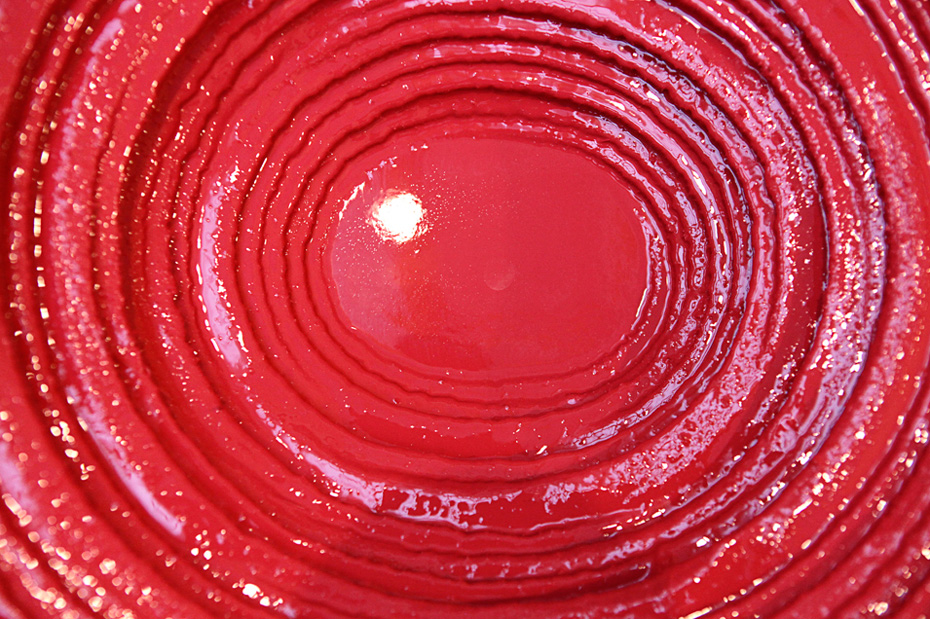
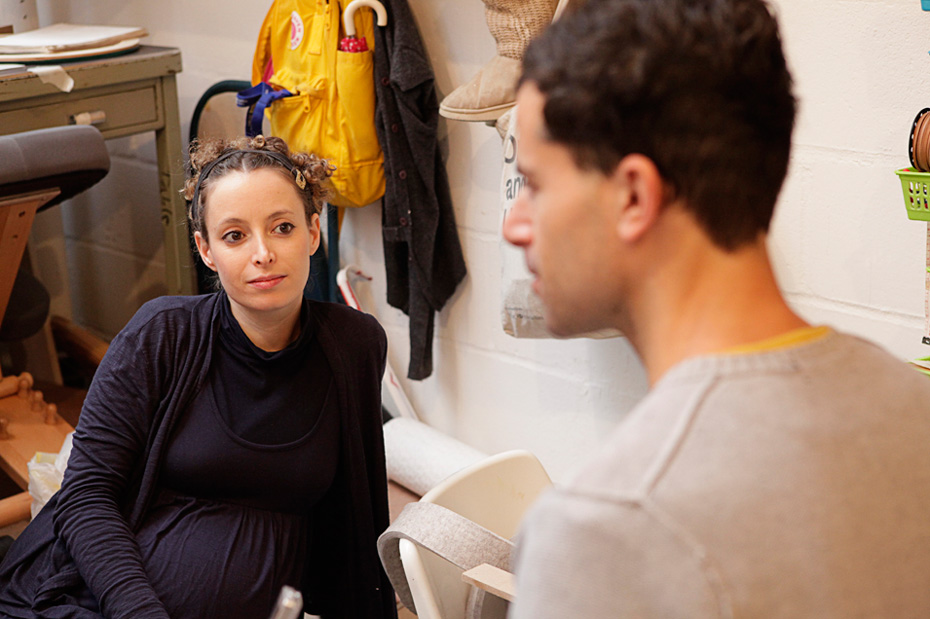
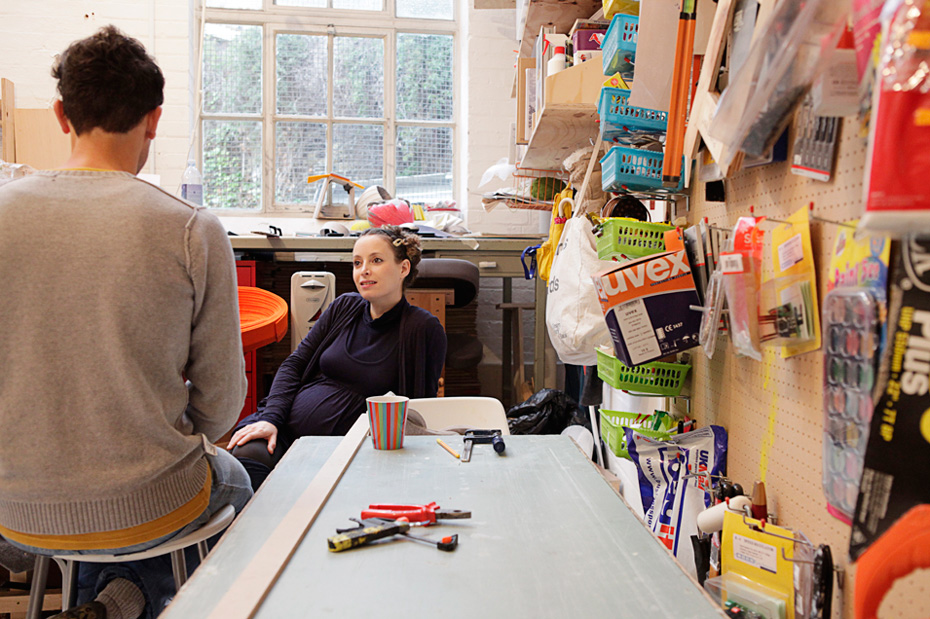
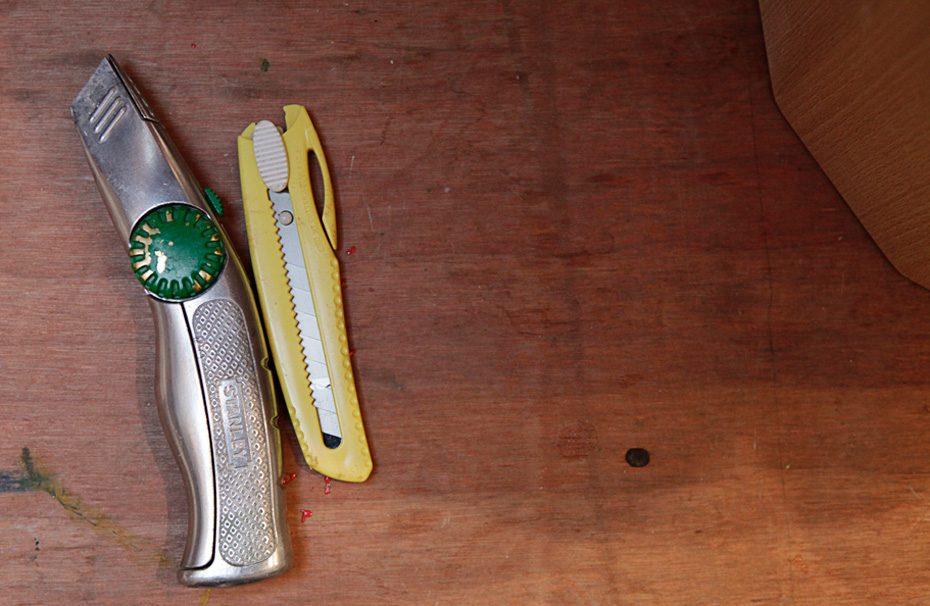
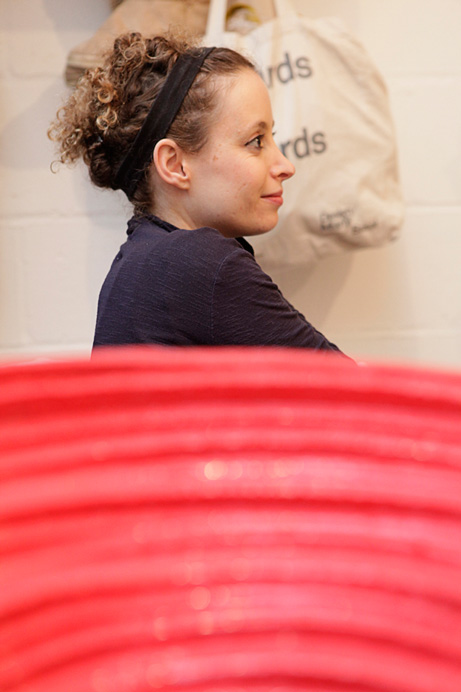
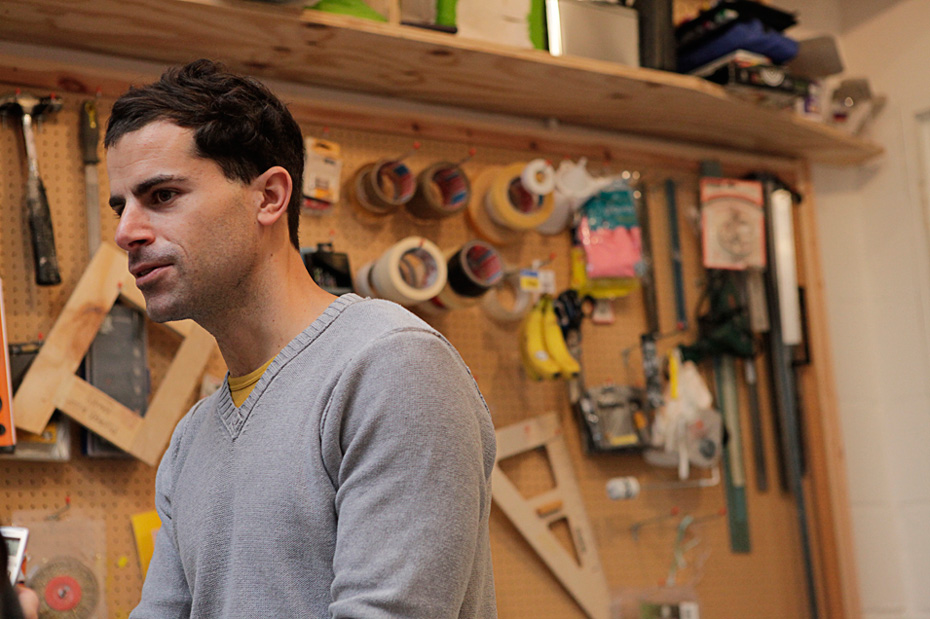
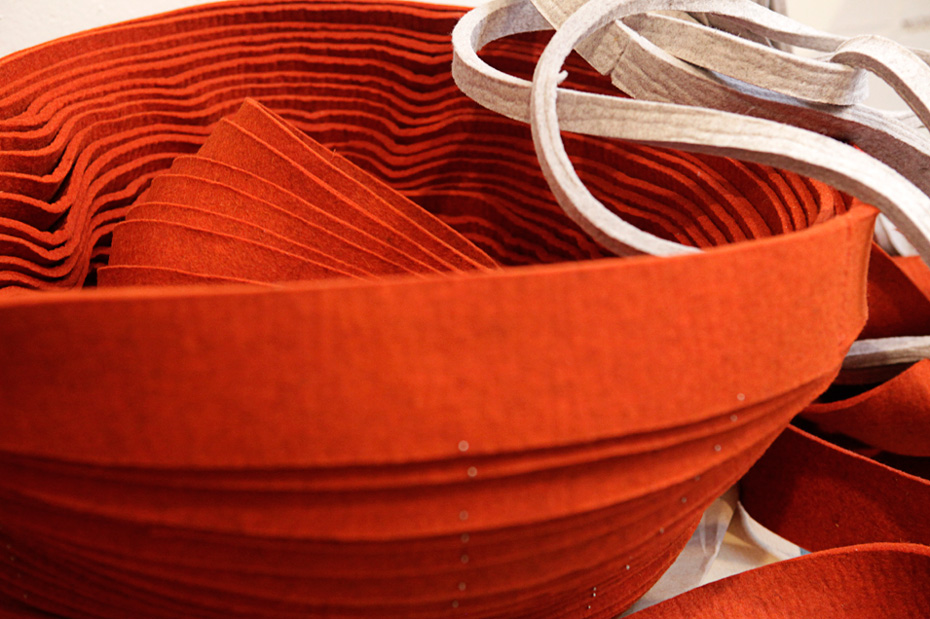
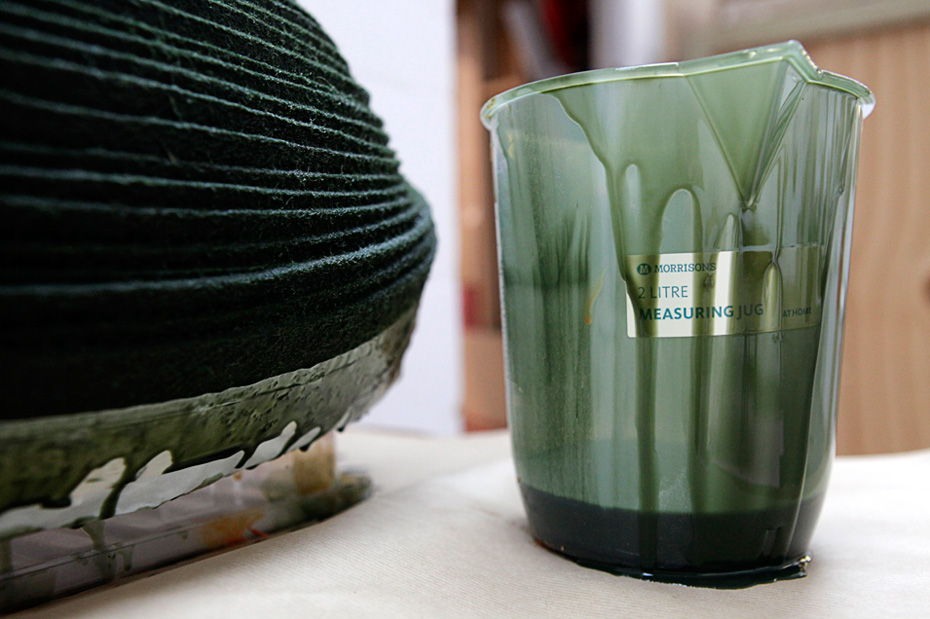
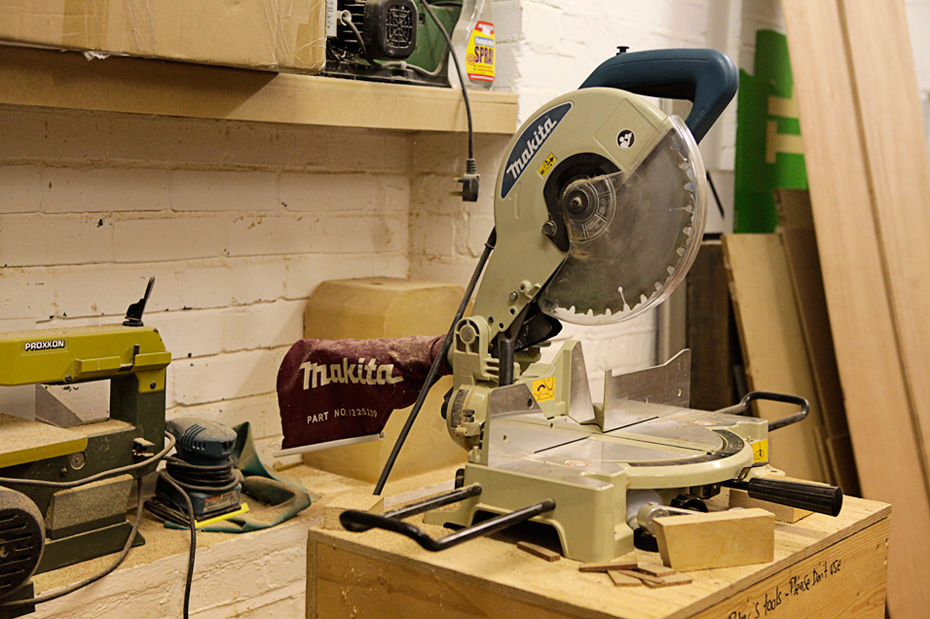
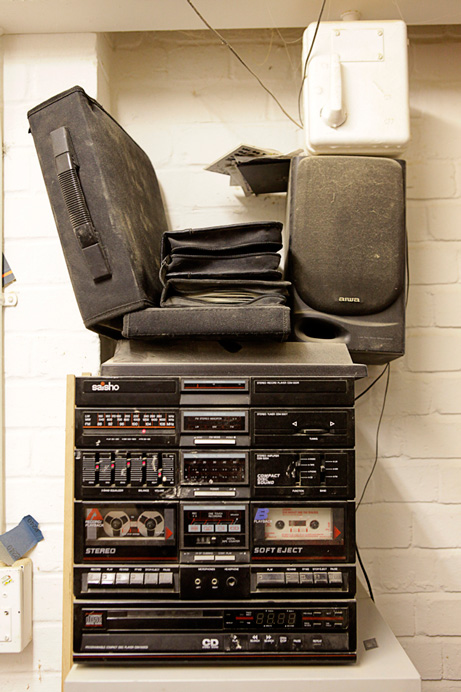
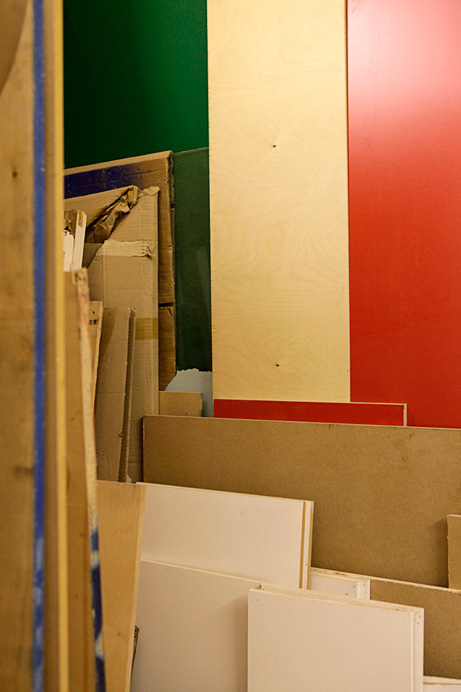
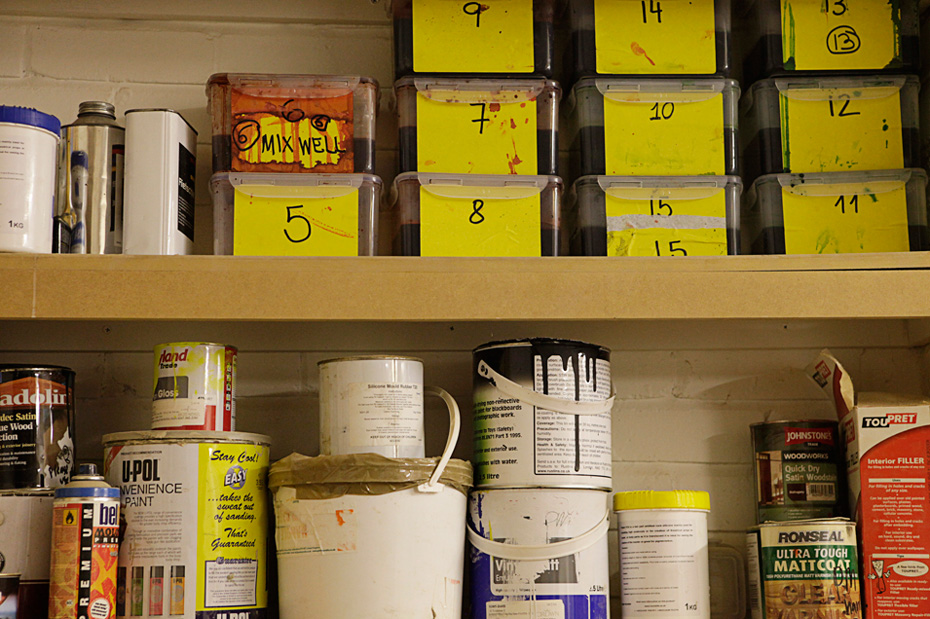
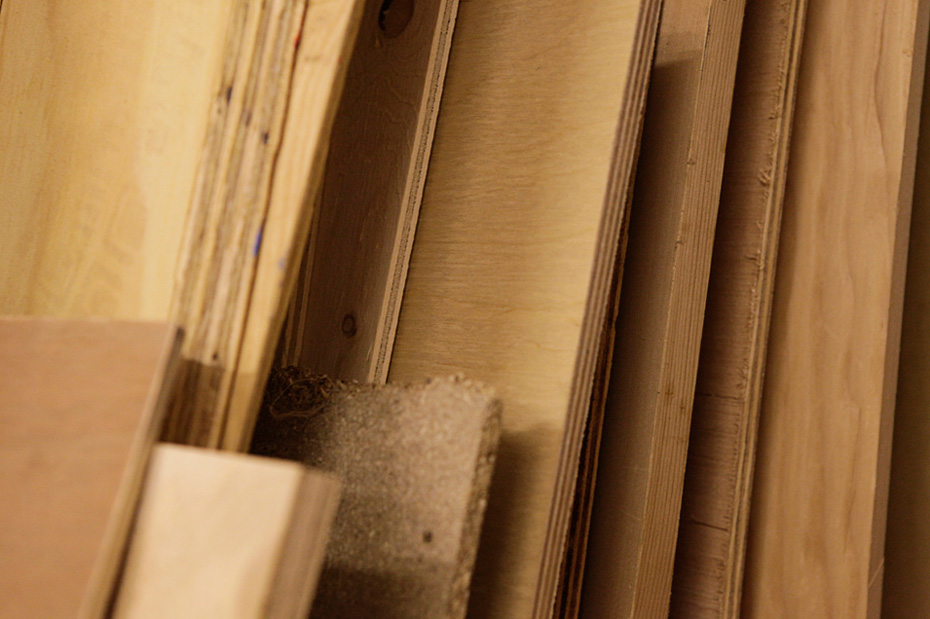
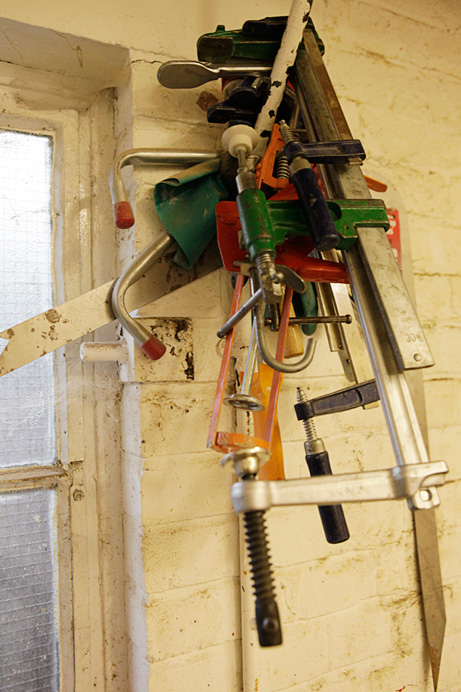
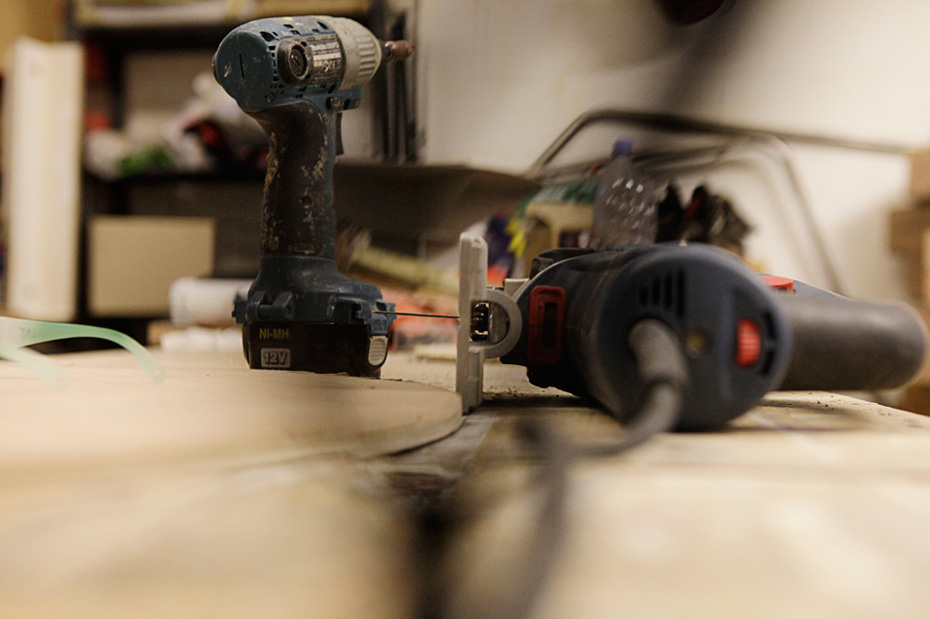
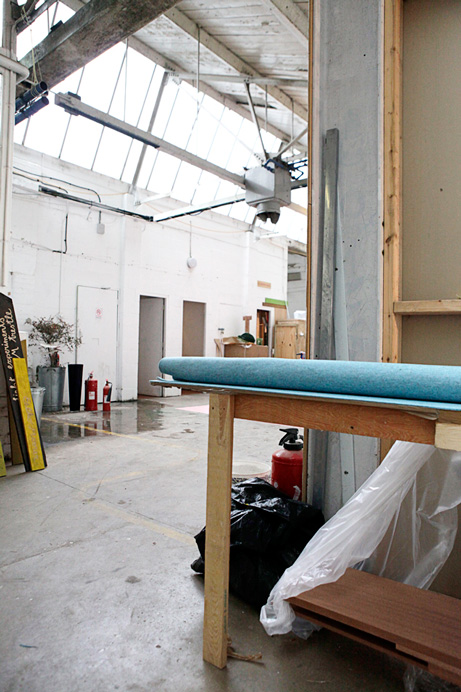
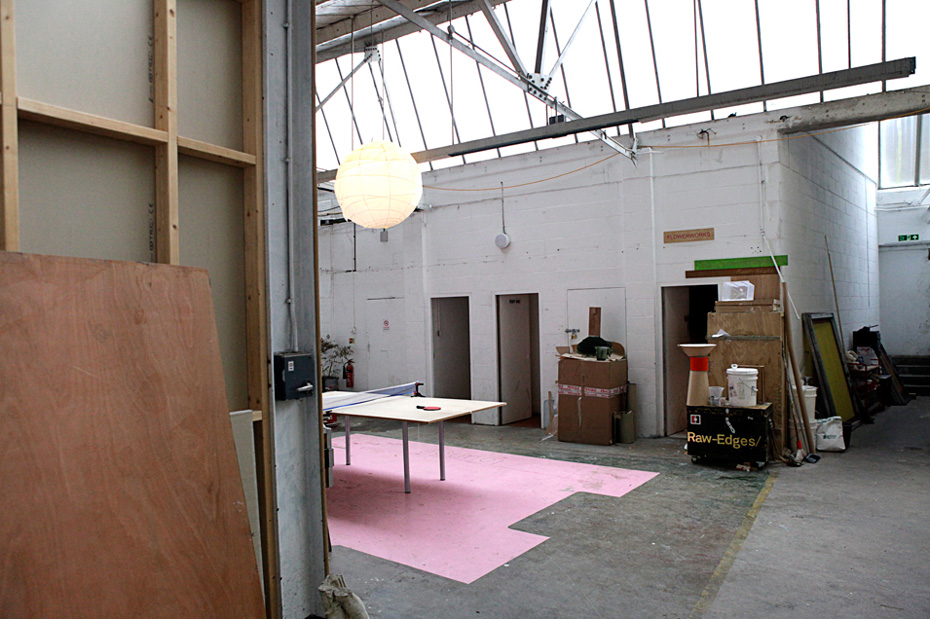
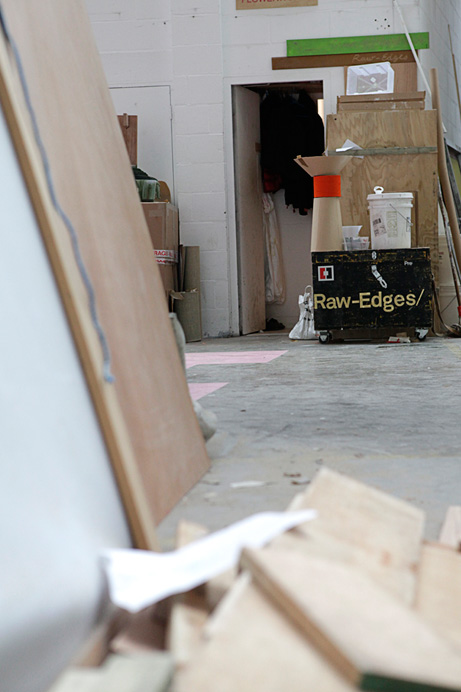
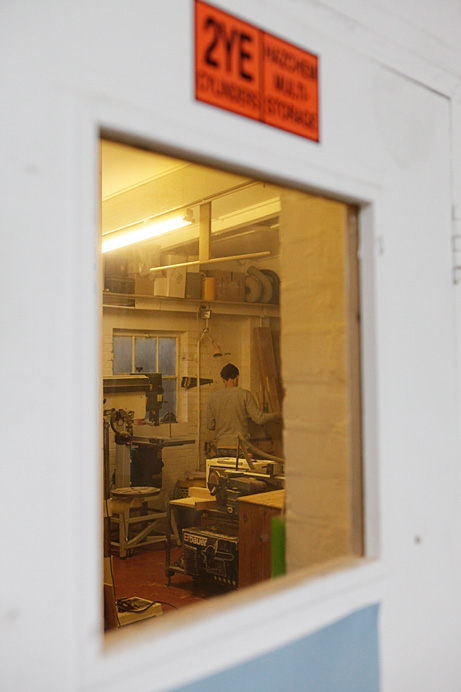
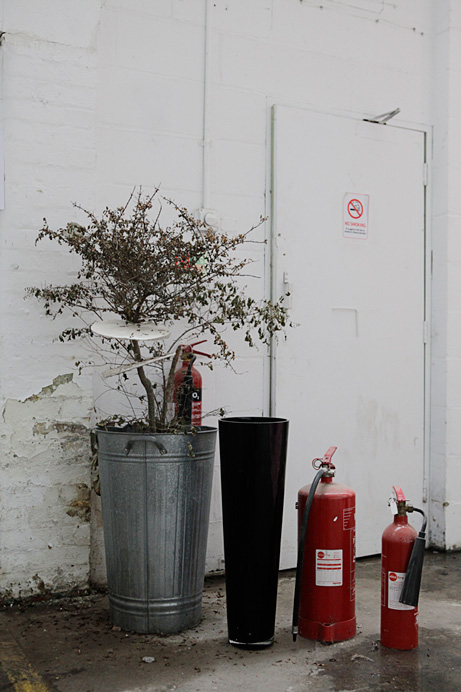
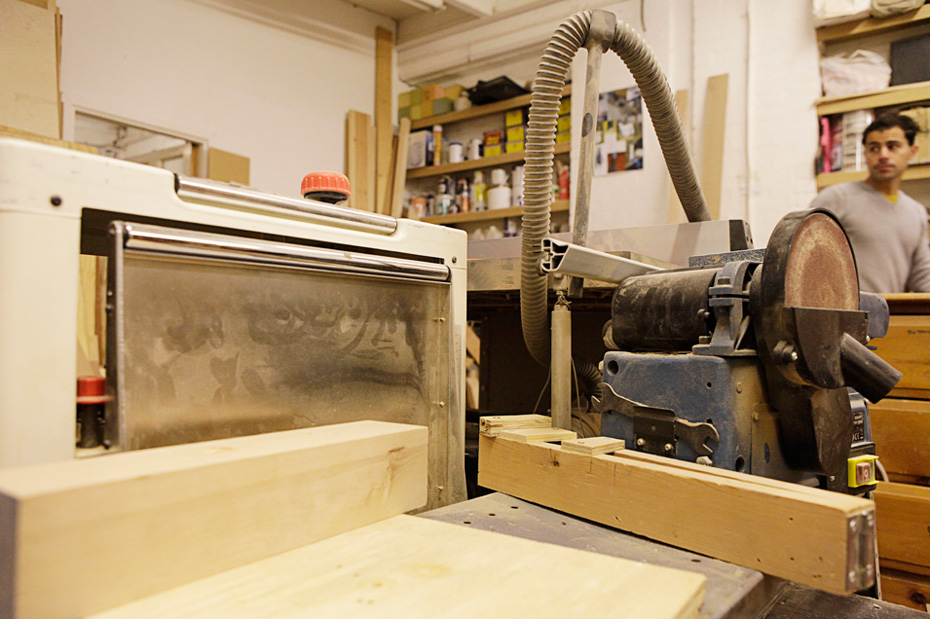
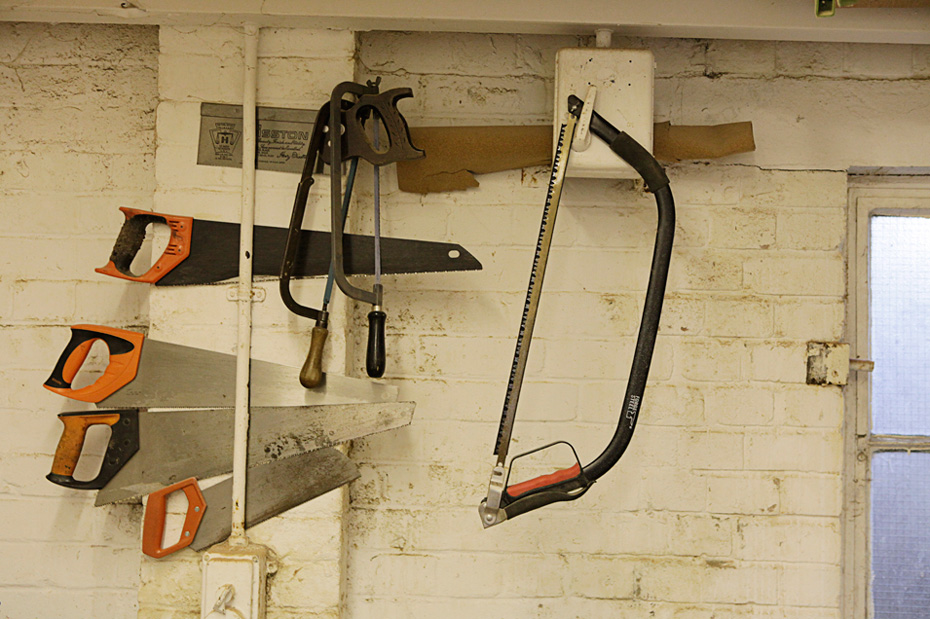
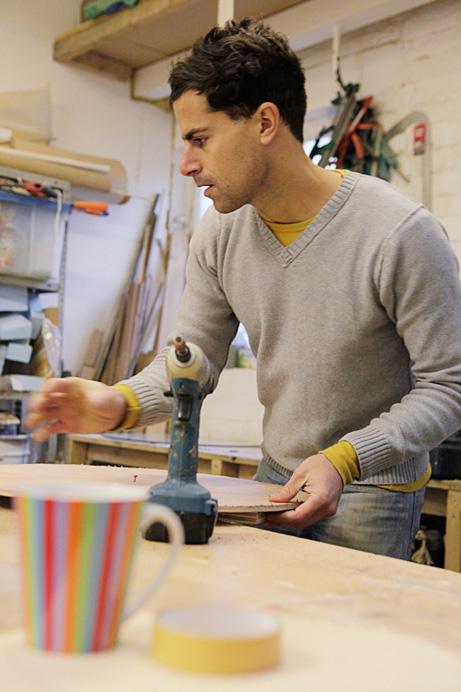
You are both born and raised in Tel Aviv. When did you come to London and why did you stay?
Yael Mer: We came in 2004 to study at the Royal College of Art and we stayed mainly because it is such an effort to move places and it didn’t made sense to go back after we’ve met so many people. Also in regard to the things that interest us as designers, there are just more possibilities in London than in Israel.
You have both lived in many different cities. What do you like about London?
Yael Mer: First of all, it’s the language. We don’t speak any other language apart from Hebrew and English and obviously we can’t really use Hebrew in other places. Lots of people come to London, so in a way it’s a junction. When you’re here you’re part of a big community and this is why it makes sense to be here. We graduated from the Royal College of Art and all our friends stayed here, so it would make such a big social difference if we would go back or move to another place.
Do you have any favourite places?
Yael Mer: Most of the time we are here in the studio – it’s really sad actually! We are always here but good stuff is going on around. I really like to walk around in Clerkenwell at the weekends when it’s really empty. And I love this neighbourhood. I don’t feel like I live in London, I feel like I live in Stoke Newington. It’s so local, we just walk from where we live to the studio and most of our friends are around here, so it’s mainly about Stoke Newington.
When did you found Raw Edges and can you explain the idea behind it?
Yael Mer: After graduating from the Royal College of Art we were asked to go to China to do a project of developing some accessories. We said yes and moved for four months to China. This project was the first time Shay and I worked together. Before we were involved in each other’s projects, giving advices and asking each other things, but it was very clear that something was Shay’s project or my project. Whilst we were there, we realized that we were working quite well together. Back then, we were always looking for material that we could use raw edged – raw and not treated. We were always saying “let’s keep it raw edges, let’s keep it raw edges“, and when we came back and decided to work together we knew we would have the name Raw Edges. There wasn’t any plan. We tried to do as many exhibitions as possible because we realized how important it is to get exposure and the opportunity to actually create things. If you just design and there isn’t any deadline or any event to show things then it just doesn’t make sense. So we looked for opportunities to show things and this was the beginning in 2007.
Were you not interested to work for someone else?
Yael Mer: We were looking for proper jobs, but no one took us, no one wanted us. We tried, but no one got back to us.
Shay Alkalay: When you’re graduating from the Royal College of Art with all these strange projects – I did bin bag teddybears, Yael did an evacuation dress – you don’t expect to find a job with such a portfolio.
Yael Mer: They say the Royal College of Art opens doors, but I think it just opens particular doors and closes others. It’s okay though.
Are your designs more developed in the process or do you do a lot of sketches and technical drawings beforehand?
Shay Alkalay: We have a rough idea and we do a really quick sketch to explain to each other what we’re talking about and then we start with the material straight away. Unless we do it in a big scale with the right material we would never feel the object. Obviously it’s more expensive to work like this because we already have a finished piece in the right material and a few days of work. That’s why it was very important for us to have a workshop.
Yael Mer: Even when we work with computers it’s just for us to understand it and to get a rough idea, it’s not even for communication with someone else. As soon as possible we move to the actual material.
Shay Alkalay: When we work with companies we have to send sketches for them so they can start doing their prototypes. I always try to do renders, so it looks really convincing and they can imagine it’s going to be a real product. But then it looks so fake and boring, the computer takes control on the shapes and everything looks the same, like thousands of other designs, you’ve already seen. So we try to avoid it if it’s possible and it saves time as well.
So you don’t like to work with renders?
Yael Mer: We both have this allergy of computers – the results are too shiny.
Shay Alkalay: It looks too cold, it’s just a waste of time and we never use it for publications. We prefer not to have renders in press or on websites. Sometimes we get portfolios from students sending us renders, but it doesn’t make sense. You can do whatever you want in 3D, but unless you really tried and there is a principle that is not proven yet in reality, for us it’s like as if it’s not existing.
You work with exciting materials. Do they come with an instruction manual or is all you do in the beginning try and error?
Shay Alkalay: It’s a matter of trying and trying to improve. When we come up with an idea, we do research and see whether this object exists, and if the principle already exists, we try not to do it anymore. It’s not that the material comes with any instructions but we do call companies, like the silicone supplier, and ask them for advice. If there are ten different types of silicone, we buy small samples, try all of them and see which one works best.
The production of a mock-up must be very time-consuming and expensive. How much freedom do you allow yourselves with experimenting?
Yael Mer: It’s really important for us. As long as it’s not too expensive, we will try to do the mock-up with the actual material. We do a small one like 1:3 – this is the most important part of the design.
Shay Alkalay: Also, we don’t get really expensive material. I think the felt that you see here is the most expensive material we’ve used so far. We don’t work with marble or fancy bronze – not because of the money – just because this material has so much history and importance in tradition and the tradition of making. I don’t think we have a lot to add to what there is already. So we take a material, like wood, paper or felt, this kind of normal material, and add other materials and combine it, so the design is most important. It’s not the material that makes our stuff interesting, it’s interesting because of the combination, because of the idea.
To what extent do you complement one another?
Yael Mer: We just irritate each other. My role is to irritate Shay and Shay’s role is to annoy me. This is how we complement each other. We start with something and then we try to find a way to extend the idea.
Shay Alkalay: Yeah, usually I come up with a sketch and then Yael says that someone did it already. Or, if no one did it, then I say that there is no way to do it, that she is dreaming but in the end something comes up.
Do you always agree in terms of designing or does some of your work develop from a constructive debate?
Yael Mer: Eventually, after a long process, there is an agreement – but it doesn’t come in the first place.
Shay Alkalay: It has never come to violence, but sometimes it’s almost there.
How did the collaboration with Cappellini come about?
Yael Mer: Three years ago we did an exhibition with all OKAY Studio members and we came up with the project Tailored Wood.
Shay Alkalay: We sent an email to them and they didn’t reply at first. It wasn’t until four months later that we got an email from Giulio Cappellini, saying he loves the project – a year later we were showing it in Milan. We are still working on a few versions, but it was quite quick and straightforward. He came here to the studio to visit us, it was really nice, he stayed for three hours and looked at all the prototypes and sketches that we had. He is so fascinated by design and so eager to see what people do and what they are working on. He wants to know the bigger picture of the designer; I really appreciate that. This man is so important – he has so much experience from so many years. He hasn’t lost any passion, like a child that gets excited by what he does. It’s really inspiring.
Form follows function or function follows form?
Shay Alkalay: Everything follows fun! It needs to be part of it without even talking about it. For us, it’s most important that you see a little bit of humour, it should just cheer you up.
Yael Mer: It’s not just the functionality. There is the process, there is your own personal approach and there are so many other things. Functionality is just a certain percentage.
Shay Alkalay: But it does need to function. When we make a chair and we won’t be able to sit on it, we won’t be happy.
You seem to have a very carefree and open design approach, as if you wouldn’t consider compromising in terms of production and material costs or think about what meets the markets demands…
Shay Alkalay: With furniture nobody knows what you need, because no one needs another chair – that’s obvious. People need what they want and I think it’s quite difficult to know what people want. So we do what we want and we hope that someone else would want it in the end as well. And this is how we worked from the very beginning.
Yael Mer: I think we have a feeling of what is quite attractive and people would want.
Shay Alkalay: We’re not talking about masses here, it’s a very small quantity of people that hopefully like what we do. It’s not on the surface but maybe it’s inside our understanding. We do furniture, so obviously we want to do it for other people and not for ourselves, so this is part of it. But for instance with Stack, these drawers for Established & Son, I first did the green version and then there is also a red version because they asked to have more than one colour combination. The green was very easy, I made this colour combination in ten minutes. The red was so difficult, it took me more than a week and still now when I see it, I always think I should have changed something, but the red one is the bestseller. It’s difficult to predict how the market will react.
What advice would you give to someone who has just graduated?
Shay Alkalay: That sounds a bit clichéd, but people should just do what they believe for themselves. I think this is what we learned at the Royal College of Art, to focus not on what is right for others but what is right for yourself. Learn what you’re interested in and what you want to say, how you can add something to all the existing products. That’s it pretty much.
How do you live personally? How important is furniture in your own home?
Yael Mer: We try to have it as empty as possible.
Shay Alkalay: Yeah, we really like moving flats because it’s a really good way to get rid of all our stuff. I like to get rid of stuff.
You don’t have your own furniture in your flat?
Shay Alkalay: We have some in the flat but just when we don’t have space here in the studio for them. We have a few pieces, but it’s not something that we’ve designed for ourselves, it’s more like prototypes or something that came back from an exhibition which we can’t sell anymore, so then we take it.
So you don’t spend lots of money on furniture at all?
Shay Alkalay: No. We don’t have the money to buy furniture – we buy at Ikea. We couldn’t afford our own design unless we make it for ourselves. It’s the same with the production pieces; I hope to get them at some point.
Is there anybody you admire and you’d like to collaborate with?
Shay Alkalay: I really like the director Michel Gondry, I think he’s super inspiring. Whenever I see one of his video clips or advertising films, I always feel like this man is so creative. How can he have so many great ideas?
Have you ever tried contacting him?
Shay Alkalay: No, we never tried to make any connection. But every time someone asks me, this is what I say, so hopefully he will read it one day.
Thank you very much for your time and the nice conversation! For more information on Raw Edges work, we suggest you check out their website.
Photography: Jean-Philippe Woodland
Interview & Text: Lilli Heinemann
